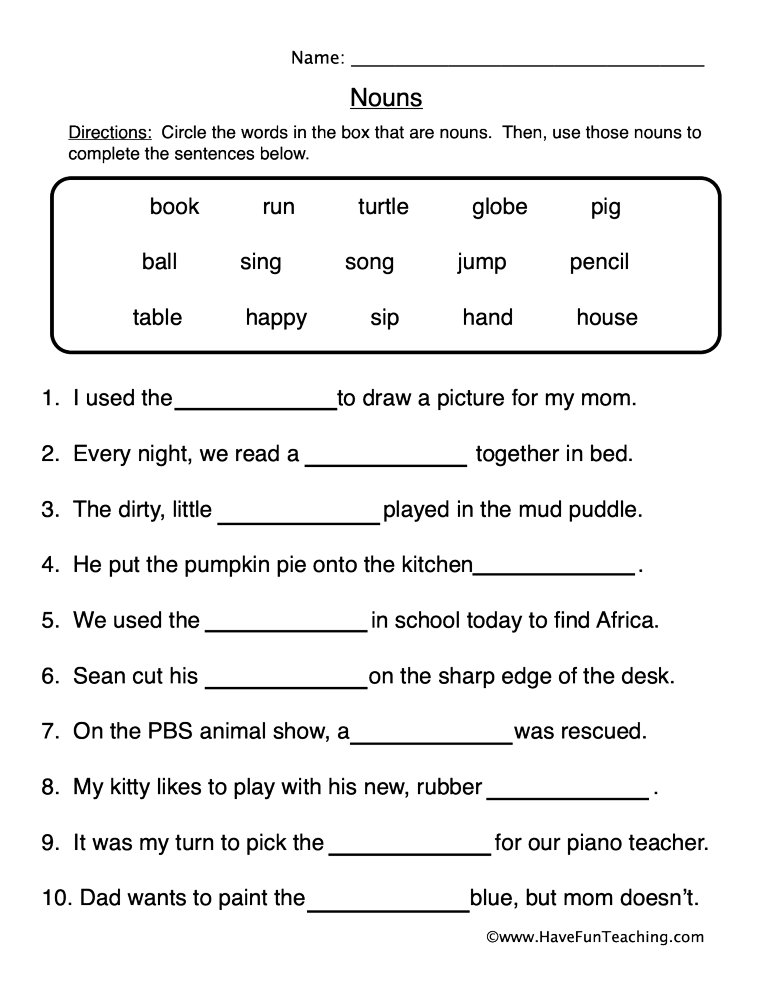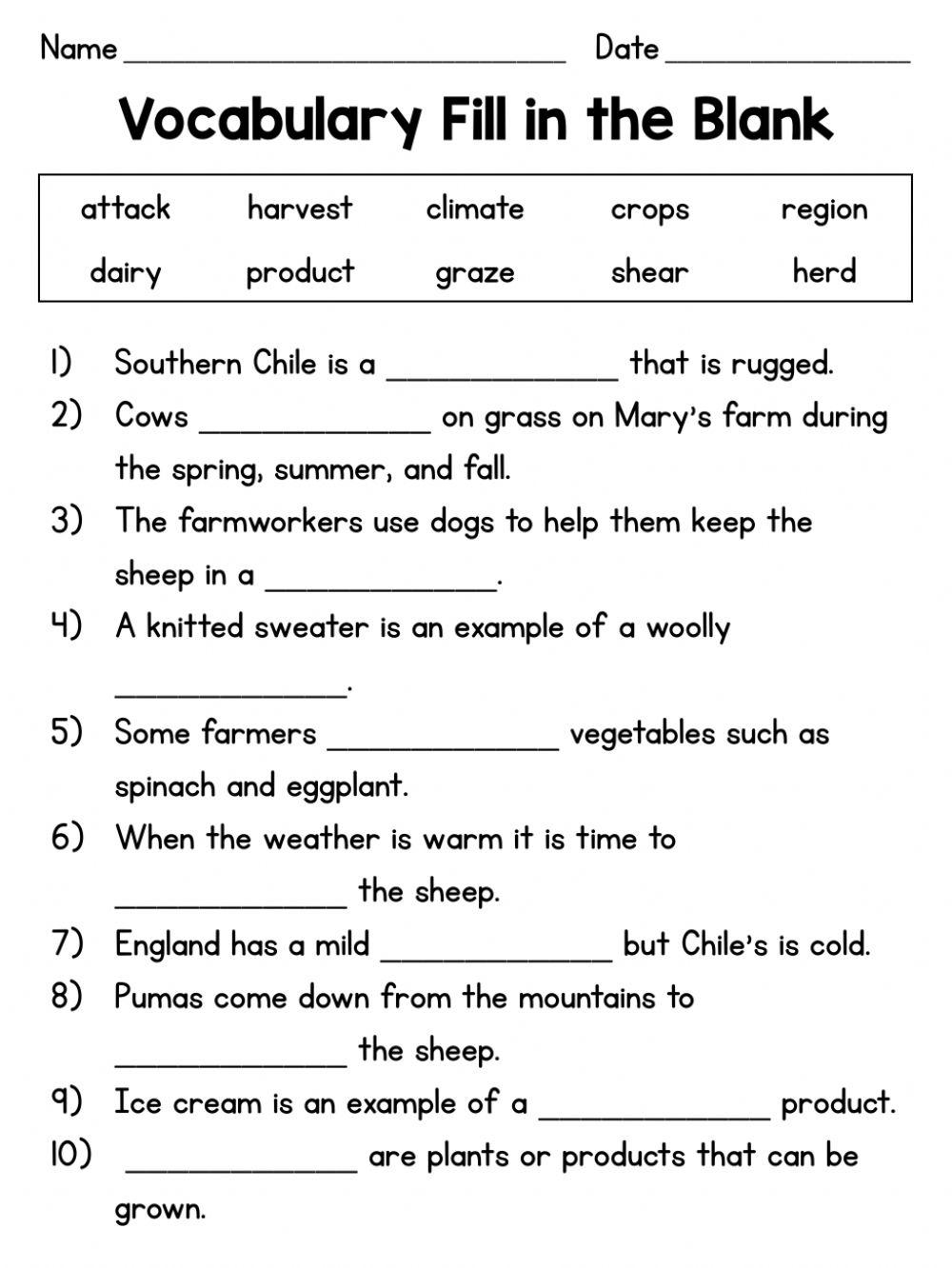
The Enduring Value of Fill in the Blanks Worksheets in Education
In the vast landscape of educational tools and methodologies, some concepts remain perennially relevant despite the advent of new technologies and pedagogical theories. Among these enduring staples are fill in the blanks worksheets. Simple yet remarkably effective, these worksheets have been a cornerstone of learning across disciplines and age groups for generations. From basic vocabulary acquisition in elementary school to complex scientific concepts in higher education, their versatility and inherent ability to engage learners in active recall make them an indispensable resource for educators worldwide.
At its core, a fill in the blanks worksheet presents a passage, sentence, or question with one or more words deliberately omitted, represented by a blank space. The learner’s task is to supply the missing word(s) based on context, prior knowledge, or a provided word bank. This seemingly straightforward exercise taps into fundamental cognitive processes, making it a powerful tool for reinforcing learning, assessing comprehension, and developing critical thinking skills.

A Brief History and Pedagogical Underpinnings

The concept of "cloze" (from closure), where parts of a message are removed and the reader must infer the missing elements, has roots in Gestalt psychology and information theory. Educational applications of this concept emerged in the mid-20th century, particularly with the development of the "cloze test" as a measure of reading comprehension and readability. Over time, the formal cloze test evolved into the more generalized and adaptable fill in the blanks worksheets we recognize today, used not just for assessment but primarily for instruction and practice.

The effectiveness of these worksheets stems from several key pedagogical principles:

- Active Recall: Unlike passive reading or listening, filling in blanks requires learners to actively retrieve information from their memory. This act of retrieval strengthens neural pathways and improves long-term retention, a phenomenon known as the "testing effect."
- Contextual Learning: Learners must analyze the surrounding words and sentences to deduce the correct answer. This process naturally encourages an understanding of how words function within a larger context, improving comprehension and semantic awareness.
- Immediate Feedback Potential: When used in a classroom setting with an answer key or digitally with instant feedback, learners can immediately ascertain whether their answer is correct. This immediate reinforcement or correction loop is crucial for effective learning, allowing misconceptions to be addressed promptly.
- Focused Attention: The act of identifying and filling in a blank demands focused attention on specific details, preventing superficial reading or skimming.


Versatility Across Subjects and Skill Levels
One of the most significant strengths of fill in the blanks worksheets is their incredible adaptability across virtually every subject area and proficiency level.

1. Language Arts and English as a Second Language (ESL):
- Vocabulary Building: Learners fill in blanks with appropriate synonyms, antonyms, or context-specific words from a word bank.
- Grammar Practice: Exercises can target verb conjugations, pronoun usage, prepositions, articles (a/an/the), tenses, and sentence structure. For instance, "She ___ (go) to the market yesterday."
- Reading Comprehension: Short passages with key words or phrases omitted test understanding of plot, character, or main ideas.
- Spelling: Blanks within words can help reinforce correct spelling, e.g., "b_cycle."
- Punctuation: Missing commas, periods, or question marks encourage learners to apply punctuation rules.


2. Mathematics:
- Number Sequences: Filling in missing numbers in a pattern.
- Formulas: Completing equations or mathematical formulas.
- Problem-Solving: Supplying the correct operation or step in a multi-step problem.
- Units of Measurement: Matching quantities with appropriate units.
3. Science:
- Definitions: Completing definitions of scientific terms.
- Processes: Filling in steps of a biological process (e.g., photosynthesis, water cycle) or a chemical reaction.
- Diagram Labeling: While not strictly "blanks," labeling diagrams functions similarly, requiring recall of specific terms.
- Concepts: Demonstrating understanding of scientific principles by completing statements about them.
4. Social Studies and History:
- Dates and Events: Filling in key dates or names associated with historical events.
- Geography: Naming countries, capitals, or geographical features.
- Cause and Effect: Completing sentences that link historical causes to their effects.
- Key Figures: Identifying historical figures based on their contributions.
5. Foreign Languages:
- Vocabulary: Translating words or filling in missing foreign words based on context.
- Grammar: Conjugating verbs, applying gender and number agreements, using correct prepositions.
- Sentence Construction: Building coherent sentences by supplying missing components.
Advantages of Incorporating Fill in the Blanks Worksheets
The benefits of using fill in the blanks worksheets extend beyond their versatility:
- Targeted Practice: They allow educators to focus on specific skills or knowledge areas that require reinforcement, ensuring learners master discrete concepts before moving on.
- Assessment Tool: They serve as excellent formative assessment tools, providing immediate insight into student understanding and identifying areas where further instruction is needed. They can also be used for quick summative assessments.
- Differentiation: The difficulty can be easily adjusted. Simple blanks with a word bank are suitable for beginners, while complex passages requiring nuanced understanding and no word bank challenge advanced learners.
- Independent Learning: Students can work on these worksheets independently, fostering self-reliance and allowing teachers to attend to individual needs or facilitate group activities.
- Time-Efficient: They are relatively quick to create (especially with digital tools) and often straightforward to grade, making them practical for busy educators.
- Engaging for Many Learners: The puzzle-like nature of finding the missing piece can be inherently engaging, turning a learning task into a mini-challenge.
- Preparation for Standardized Tests: Many standardized tests incorporate fill-in-the-blank or cloze-style questions, making these worksheets excellent practice for test-taking strategies.
Challenges and Best Practices for Effective Design
While highly beneficial, fill in the blanks worksheets are not without their potential pitfalls. Poorly designed worksheets can lead to frustration, encourage guessing over genuine understanding, or simply reinforce rote memorization without deeper comprehension.
Common Challenges:
- Ambiguity: If multiple answers could reasonably fit the blank, the exercise loses its effectiveness and can confuse learners.
- Over-reliance on Guessing: If there aren’t enough contextual clues, students might guess randomly rather than applying knowledge.
- Lack of Critical Thinking: If all answers are simple recall, the worksheets might not challenge higher-order thinking skills.
- Lack of Creative Expression: They don’t typically encourage original thought or creative writing.
Best Practices for Design and Implementation:
- Clear Instructions: Always provide explicit instructions on what is expected.
- Appropriate Difficulty: Tailor the complexity of the passage and the missing words to the learners’ proficiency level.
- Sufficient Contextual Clues: Ensure there are enough surrounding words or sentences to help learners deduce the correct answer, unless the goal is purely rote recall (e.g., specific definitions).
- Varied Blank Placement: Don’t always place blanks at the end of sentences. Varying their position keeps learners engaged and requires more thorough reading.
- Meaningful Content: The passages should be relevant and interesting to the learners, connecting to current learning objectives.
- Use Word Banks Judiciously: For younger learners or when introducing new vocabulary, a word bank can be very helpful. For assessment or to challenge more advanced students, omit the word bank.
- Consider Technology: Digital fill in the blanks worksheets can offer immediate feedback, tracking progress, and even gamification elements, making them even more engaging and efficient. Online platforms often allow for drag-and-drop answers or auto-grading.
- Integrate with Broader Lessons: Don’t use them in isolation. They should complement lectures, discussions, readings, and other activities.
- Provide Feedback and Review: Simply completing the worksheet isn’t enough. Review answers as a class, discuss common errors, and explain why certain answers are correct or incorrect.
The Future of Fill in the Blanks Worksheets
In the digital age, fill in the blanks worksheets are far from obsolete. In fact, their adaptability to online learning environments has given them a new lease on life. Learning management systems (LMS) and educational platforms frequently incorporate fill-in-the-blank question types, often with sophisticated features like automated grading, randomized questions, and performance analytics. This integration into digital ecosystems enhances their efficiency and expands their reach, making them a cornerstone of blended and remote learning models.
They continue to play a vital role in personalized learning pathways, allowing students to practice at their own pace and focus on areas where they need the most support. As educators increasingly leverage data to inform instruction, the immediate feedback and quantifiable results from digital fill-in-the-blank exercises become invaluable.
In conclusion, fill in the blanks worksheets stand as a testament to the power of simplicity in education. Their enduring popularity is not merely due to tradition but to their proven effectiveness in fostering active recall, contextual understanding, and focused attention. When thoughtfully designed and strategically implemented, these worksheets remain an incredibly potent tool in the educator’s arsenal, helping learners solidify knowledge, develop essential skills, and build confidence across the educational spectrum. They are, and will likely remain, a foundational element in the continuous journey of learning.
